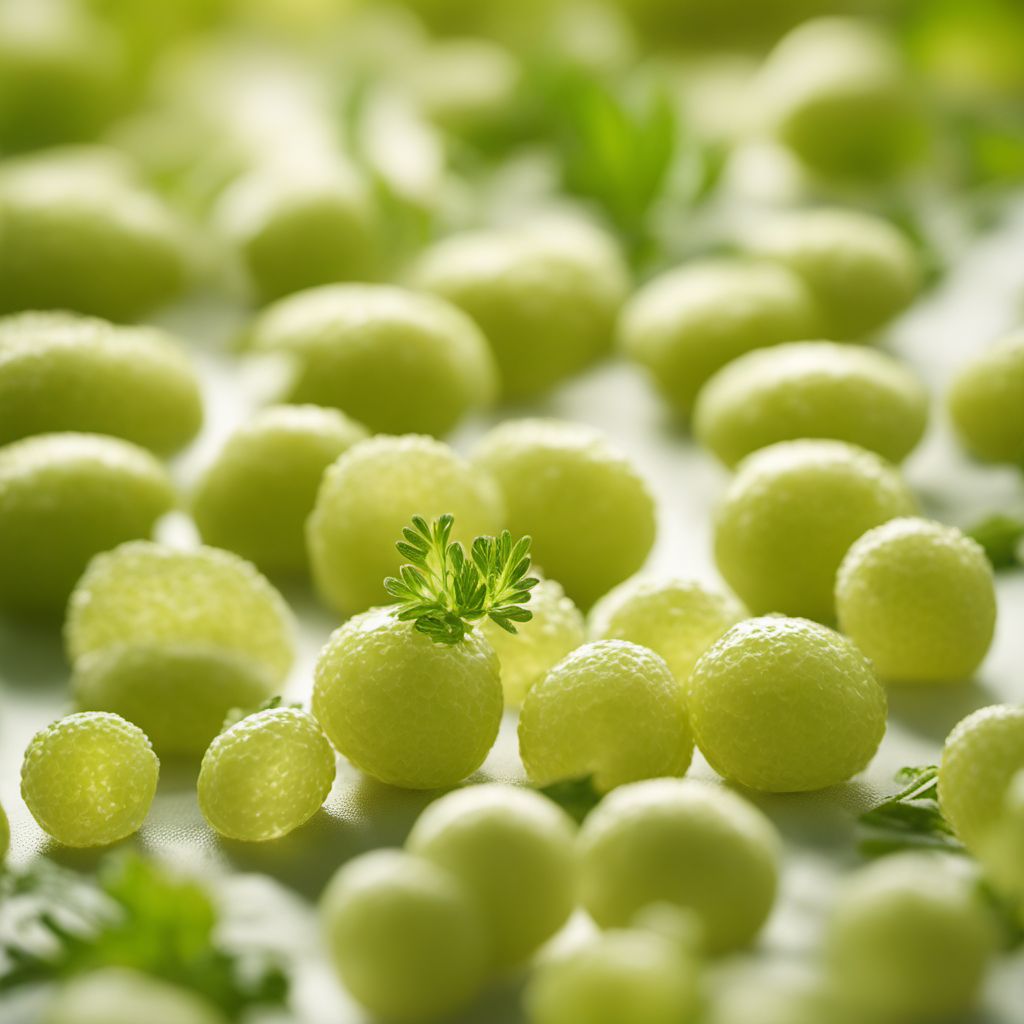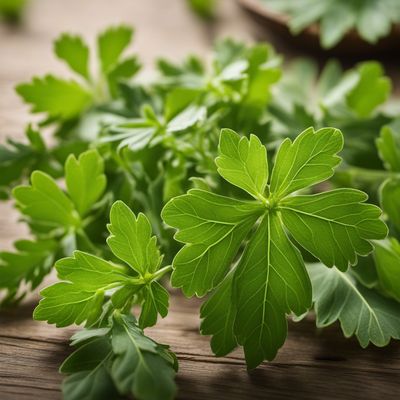
Ingredient
Rue, dry
The Bitter Herb: Unveiling the Secrets of Dry Rue
Dry rue, also known as Ruta graveolens, is a perennial herb that belongs to the Rutaceae family. It is characterized by small, bluish-green leaves and delicate yellow flowers. The herb has a strong, pungent aroma and a bitter taste that can be overpowering if used excessively. Its texture is slightly coarse, and when dried, the leaves become brittle. Dry rue is often used sparingly due to its intense flavor, which can add depth and complexity to dishes.
Origins and history
Dry rue has a rich historical background, dating back to ancient times. It is believed to have originated in the Mediterranean region and was highly valued by the ancient Greeks and Romans. The herb was used for culinary purposes, as well as in traditional medicine for its potential health benefits. Throughout history, rue has been associated with various cultural and religious beliefs, and it has been used in rituals and ceremonies in different parts of the world.
Nutritional information
Dry rue is a good source of vitamins A, C, and E, as well as minerals like calcium and iron. It is low in calories and carbohydrates, making it a suitable addition to a balanced diet.
Allergens
Some individuals may be allergic to rue, especially when it comes into contact with the skin. It is advisable to exercise caution and avoid excessive consumption or direct contact if you have known allergies or sensitivities.
How to select
When selecting dry rue, look for leaves that are vibrant in color and free from any signs of discoloration or mold. The leaves should be intact and not crushed. Opt for reputable brands or suppliers to ensure the quality and freshness of the herb.
Storage recommendations
To maintain the freshness and quality of dry rue, store it in an airtight container in a cool, dark place. It can also be stored in the refrigerator, where it can retain its flavor and aroma for several months.
How to produce
Dry rue can be grown in a sunny location with well-drained soil. It is best propagated through seeds or cuttings. However, it is important to note that rue can be toxic if ingested in large quantities, so it is essential to handle it with care and follow proper cultivation guidelines.
Preparation tips
Dry rue should be used sparingly due to its strong flavor. It is commonly used in Mediterranean and Middle Eastern cuisines to enhance the taste of soups, stews, and sauces. To mellow its bitterness, it can be combined with other herbs or spices. When using dry rue, it is recommended to crush or grind the leaves to release its essential oils and maximize its flavor.
Substitutions
Dry rue has a unique flavor profile, and finding an exact substitute can be challenging. However, if unavailable, a combination of other bitter herbs like tarragon, dandelion greens, or even a small amount of citrus zest can provide a similar flavor profile.
Culinary uses
Dry rue is commonly used in Mediterranean and Middle Eastern cuisines. It is often added to dishes like Moroccan tagines, Greek moussaka, or Italian pasta sauces to impart a distinct bitter note. It can also be used to flavor vinegars, liqueurs, and herbal teas.
Availability
Dry rue is commonly available in specialty spice stores, health food stores, and online retailers. It can be found in regions with a strong culinary tradition influenced by Mediterranean or Middle Eastern cuisines.
More ingredients from this category » Browse all

Hyssop, dry
The Aromatic Herb: Unveiling the Secrets of Dry Hyssop

Bay leaves, dry
Aromatic Leaf of Flavor

Balm leaves, dry
The Soothing Herb: Balm Leaves

Fennel, dry
The Fragrant Spice of the Mediterranean

Lovage, dry
The Aromatic Herb: Lovage

Tansy and related species, dry
The Golden Herb of Ancient Times

Woodruff, dry
The Fragrant Herb: Unveiling the Secrets of Dry Woodruff

Rosemary, dry
"The Fragrant Herb: Unveiling the Secrets of Dried Rosemary"

Mints, dry
The Versatile Herb: Unlocking the Aromatic Power of Dry Mints

Wintergreen leaves, dry
Nature's Minty Delight

Borage, dry
The Vibrant Herb of Delight

Thyme, dry
The Essence of Thyme: A Versatile Herb